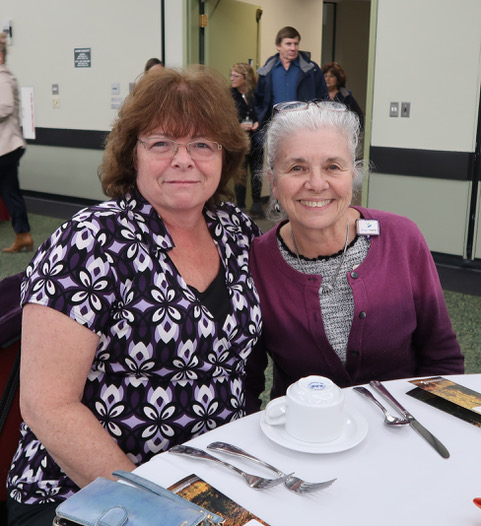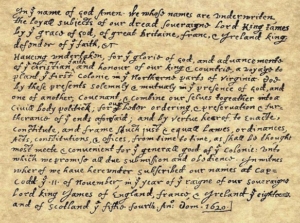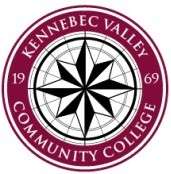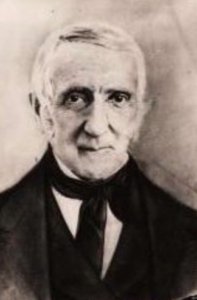
Rev. Jeremiah Chaplin
Instead of moving to the next town, this article will provide abbreviated biographies of two men mentioned in last week’s story of educational development in Waterville.
Jeremiah Chaplin (Jan. 2, 1776 – May 7, 1841) was primarily a Baptist minister. Born in the section of Rowley, Massachusetts, that separated in 1838 to become Georgetown, he took his first position as a minister in 1802. He preached in Massachusetts, New York, Maine (including while he was college president in Waterville) and Connecticut.
James Hobbs Hanson (June 26, 1816 – April 21, 1894) was primarily an educator. Born in China, Maine, he began teaching when he was 19 and continued until a few days before his death.
* * * * * *
The Massachusetts legislature chartered the Maine Literary and Theological Institution in 1813, at the request of the Baptist church leaders in the District of Maine. Waterville was picked as its site, and in 1818 Rev. Jeremiah Chaplin was appointed professor of theology.
The institution became Waterville College in 1821; recognized donor Gardner Colby by becoming Colby University in 1867; and in 1899 became Colby College.

This work by James Hobbs Hanson, has been selected by scholars as being culturally important, and is part of the knowledge base of civilization as we know it.
Chaplin’s family was Baptist, Wikipedia says. He graduated in 1799 from Brown University, “a school with an historical Baptist affiliation,” as class valedictorian, with a B.A. He tutored at Brown for a year (or two or three; sources differ) and then studied for the ministry under Thomas Baldwin at Boston’s Second Baptist Church.
His first position was in Danvers, Massachusetts, in 1802, where he preached (except for a brief period at New York City’s First Baptist Church) until called to Waterville in February 1818. On April 16, 1806, he married Marcia Scott O’Brien (born March 6, 1784), of Newburyport, Massachusetts.
Edward W. Hall, in his chapter on Colby in Rev. Edwin Carey Whittemore’s Waterville history, wrote that in Danvers, Chaplin “had charge of the theological students of the Massachusetts Baptist Education Society,” perhaps explaining why he was chosen for the Waterville job.
Arthur Roberts, in his chapter on Waterville teachers in the same book, said Chaplin first intended to refuse the position, but changed his mind “after a night of prayer and what he regarded as a special revelation of the will of God.”
According to FamilySearch, by the time the Chaplins came to Waterville on June 25, 1818, the family included John, 11; Hannah, nine; Jeremiah, four; Marcia, three; Adoniram, two; and Annie, who had been born in January 1818. Three more daughters and (maybe; evidence is inconclusive) a son were born in Waterville.
Your writer assumed the children came to Waterville with their parents. However, Hall wrote that the Chaplins came with two children and “several of his pupils” (seven, George Dana Boardman Pepper suggested, in his chapter on churches in Whittemore’s history).
Several sources summarized the journey, quoting Mrs. Chaplin’s letters and diary. The family sailed up the Kennebec to Augusta on a sloop named “Hero.” From Augusta to Waterville they were in a longboat with sails; when the wind died, “the young men of the party landed and dragged the boat by a rope.”
Mrs. Chaplin was pleased to meet friendly neighbors whom she described as not “such ignorant, uncultivated beings as some have imagined,” but “people of education and refinement.”
The Chaplins’ house, at the north end of the present downtown, was also the Institution’s first instructional building. Henry Kingsbury wrote in his Kennebec County history that Chaplin taught there from 1818 until 1821, when South Hall was finished.
Three more buildings went up in the 1820s and 1830s, and the campus moved a few blocks north on College Avenue. Its buildings dominated that part of Waterville until 1931, when Colby College relocated to Mayflower Hill, on the west side of the city.
Pepper called Waterville’s First Baptist Church “in a sense, a child of the college.” He wrote that when Chaplin arrived in Waterville, he was promptly invited to preach on Sundays. On Aug. 27, a group of 20 men and women, seven (include both adult Chaplins) connected with the Institution and 13 former members of the Sidney Baptist Church, met at the Chaplin house and organized the First Baptist Church of Waterville.
Pepper said Chaplin’s sermons drew large and attentive audiences. Adjectives he quoted to describe his style included “clear” and “cogent” from one source; from another “chaste, simple, suited to the subject” and “enlivened with striking illustrations.”
Professor William Mathews, author of the chapter on Waterville in The Olden Time in Whittemore’s history, gave a different view.
Mathews wrote that until the Baptist church was dedicated in 1826, Waterville’s only religious meeting house was “an unpainted building resting on blocks, afterwards converted, with some changes, into a town hall” on the common, facing south (downriver). This hall was used by multiple denominations, but mostly by the Baptists, led by Chaplin.
Mathews wrote: “He was a tall, spare man, very grave in look and utterance; and well do I remember how weary at the age of six or seven I used to be, when, to my inexpressible relief, he finished his sixthly, or seventhly, or eighthly, and closed the big quarto Bible, and – as it seemed to me – his protracted and ponderous discourse.”
Mathews also gave Chaplin credit for an occasional “dry and pungent witticism.” The example he gave was Chaplin’s announcement that a Unitarian minister was going to preach in the church building that afternoon, while the Gospel – emphasized – would be preached at the same time in the nearby schoolhouse (by Chaplin).
Chaplin was made the college’s first president in 1821, a position he held until he resigned in 1833. According to Pepper, he continued as the Baptists’ minister, for free, until the church hired its first pastor in October 1829 (or, Kingsbury said, co-pastors in 1823).
After leaving Waterville in 1833, Chaplin preached in Rowley, Massachusetts, and Wilmington, Connecticut, before moving to Hamilton, New York, where he died in 1841.
Chaplin’s books included biographies of Henry Dunster, Harvard College’s first president; Charles Sumner; Benjamin Franklin; and Ulysses Grant. He also published, in 1881, “Chips from the White House; or, Selections from the speeches, conversations, diaries, letters, and other writings, of all the presidents of the United States.”
Chaplin helped raise money for a building for Waterville Academy, the college’s preparatory school, in 1829. More significant was his help to Gardner Colby (1810 – 1879) and his family after Colby’s father died in 1814. By the 1860s, Colby was a wealthy Boston businessman, and Waterville College was struggling; Colby’s generous donations saved – and renamed – it.
* * * * * *
After James Hobbs Hanson’s death in 1894, the Colby University trustees published a 42-page booklet of prose and verse tributes “in memory of an honored and beloved associate.” The first essay, by W. H. Spencer, D.D., began with biographical information that supplemented Kingsbury’s brief account.
Both writers were clear that Hanson came from a farming family.
Kingsbury wrote that when Hanson was 18, he “left the farm” in China to go to China Academy, in China Village, “where he was fitted for college.”
Spencer said “before he left the farm” he had a life-changing religious conversion under China Baptist Church pastor Daniel Bartlett. Bartlett baptized Hanson in China Lake on March 26, 1835, “the ice being cut for the purpose.”
His first teaching position was in 1835, in Penobscot County, Spencer said (no town named). Next he taught two terms on Vinalhaven Island, then a term in “a village school in Searsmont.”
Earlier, Hanson’s mother had persuaded him to try singing school, where he displayed unexpected talent. In Searsmont, Spencer said, he taught a singing school; finding it paid better than ordinary schools, he taught three more singing schools “the next winter.”
These teaching jobs paid his tuition at China Academy and at Waterville College, from which he graduated in1842.
After graduation, Kingsbury said, he taught continuously, and in the five decades to 1892 “he has not been absent from the school room for a week altogether for any cause.”
His first job, Spencer wrote, was in Hampden, Maine, for three terms. He applied to be principal of Hampden Academy, did not get the job and “was obliged to return to his old home on the farm in China.”
Spencer credited this disappointment to Providence, because, he said, it led Hanson to the principalship of Waterville Academy, where he found “the real work of his life” and “his destined career.”
(As summarized last week, Waterville Academy, founded in 1829, was renamed Waterville Classical Institute in 1865 and Coburn Classical Institute in 1882.)
Starting in 1843 with five students (two of them girls, Kingsbury said), Hanson brought the Academy to a peak enrollment of 308 and led to its informal name, “Dr. Hanson’s school,” before he resigned in 1854.
Invited to become principal of Eastport High School, he worked there from 1854 to 1857. Next, he became principal of Portland Boys High School, “which he brought up from a state of lax discipline to excellent efficiency.”
He stayed in Portland eight years, 1857 to 1865, the last two “in charge of a private school,” Spencer said. In 1865, Waterville College President James Tift Champlin brought him back to Waterville Classical Institute. There he stayed until the week he died, when he “turned over his classes to the substitute teachers” and went home.
Writing in 1892, Kingsbury called Hanson “an untiring and energetic principal.” Spencer summarized: “It was duty before pleasure with him, and the habit of a lifetime brought him his pleasure in duty.”
Speaking at Hanson’s funeral, Rev. A. L. Lane talked about the many hours Hanson spent helping students, not only in class but outside when they needed extra tutoring or to make up work after an absence.
He also mentioned the debt Waterville’s public high schools owed to Hanson and the Institute: the Institute was the only high school from 1864 to 1876, and since 1876, he said, “every high school principal” and many teachers had been institute graduates.
Colby University President Beniah Longley Whitman called Hanson “An untiring student, a great teacher, a consecrated Christian, a faithful friend,” and praised the quality of the students his school sent to Colby. Hanson was a Colby trustee from 1862 until he died.
The alumni tribute, prepared by Rev. C. V. Hanson, summarized Hanson’s personal life. (Rev. Charles Veranus Hanson [Aug. 30, 1844 – November 1899] was not closely related to James Hobbs Hanson.)
Hanson’s first wife was Sarah Boardman Marston, of Waterville; they were married in 1845, and she died in 1853. On Sept. 16, 1854, he married Mary E. Field, from Sidney. They had three children, a daughter who died in infancy, a second daughter who graduated from Colby in 1881 and a son who graduated from Colby in 1883.
The daughter, Sophie May, married a man named Pierce and lived in Waterville in 1894. Her brother, Frank Herbert Hanson, was in 1892 general secretary of the Zanesville, Ohio, Young Men’s Christian Association (YMCA) (Kingsbury), and by 1894 principal of the Washington School, in New Jersey (C. V. Hanson).
Mary Hanson “was for many years the principal of the primary department in the Institute.” She was also the first president of the Waterville branch of the Women’s Christian Temperance Union, organized in 1878. In 1902, she wrote the chapter on the Waterville Woman’s Association in Whittemore’s history of Waterville.
Main sources
Kingsbury, Henry D., ed., Illustrated History of Kennebec County Maine 1625-1892 (1892)
Whittemore, Rev. Edwin Carey, Centennial History of Waterville 1802-1902 (1902)
Websites, miscellaneous.


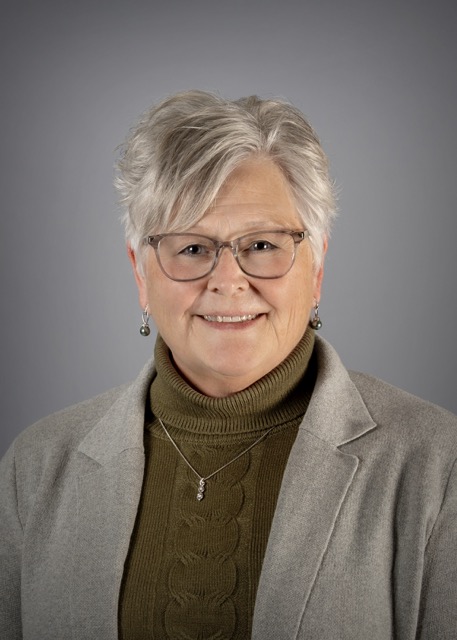

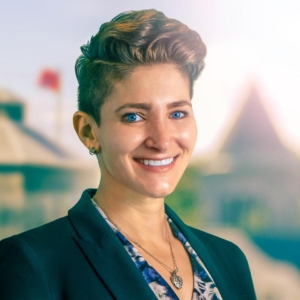

 Small Business Saturday is this coming Saturday after Thanksgiving, Nov. 30, 2024. Are you interested in writing a story on the holiday shopping season or want to arrange an interview with a small business advocate in the area? The National Federation of Independent Business (NFIB), the nation’s leading small business association, is here to help. NFIB State Director David Clough is available to discuss the importance of Small Business Saturday to the local economy and how shopping small benefits consumers, employees, and business owners alike.
Small Business Saturday is this coming Saturday after Thanksgiving, Nov. 30, 2024. Are you interested in writing a story on the holiday shopping season or want to arrange an interview with a small business advocate in the area? The National Federation of Independent Business (NFIB), the nation’s leading small business association, is here to help. NFIB State Director David Clough is available to discuss the importance of Small Business Saturday to the local economy and how shopping small benefits consumers, employees, and business owners alike.


